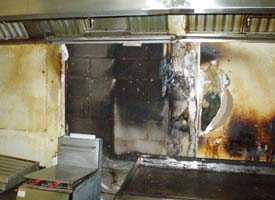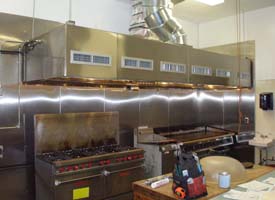FAQs
Fire Suppression System Questions
Who should service and maintain special hazard fire suppression systems?
Maintenance and servicing of special hazard fire suppression systems should be performed by a licensed and insured special hazard fire suppression servicing company with Factory trained and Certified Service Technicians.
How often should my systems be inspected?
Semi-Annually
What is a fusible link?
Fusible links are temperature sensitive fire protection devices designed to be part of a fire protection system. The Fire Suppression System is activated when the ambient temperature increases to the point that causes the fusible link to break apart.
How often do fusible links need to be replaced?
Semi-Annually
What is UL-300?
UL-300 is the Standard for the Testing of Fire Extinguishing Systems for Protection of Restaurant Cooking Areas, effective since November 21, 1994. All new restaurant cooking area fire protection systems manufactured after the effective date must comply with UL-300 for a UL listing.
How do I know if my Kitchen Exhaust Hood System meets UL-300 Standards?
Obvious Indicators that your kitchen exhaust hood system does not meet UL-300
would include:
- No UL-300 label on the system’s cylinder(s)
- Installed prior to 11/21/1994
- Dry chemical extinguishing media
- Dry chemical discharge nozzles – large size- 2” diameter heads
- System uses water spray or CO2 to protect appliances
- System uses a single nozzle to protect multiple appliances or multiple cooking surfaces
What is UL?
Underwriters Laboratories Inc. (UL) is an independent, not for profit product safety testing and certification organization. UL has tested products for public safety since its founding in 1894.
What are the clearances required by code from my Kitchen Exhaust Hood and ductwork to combustible, limited combustible, and noncombustible materials?
NFPA-96 Section 4.2.1 requires a clearance of 18” to combustible material, 3” to limited-combustible material, and 0” to noncombustible material.
Why does my Kitchen Exhaust Hood need to be welded?
NFPA-96 Section 5.1.2 requires that all seams, joints and penetrations of the hood enclosure that direct and capture grease-laden vapors and exhaust gases shall have a liquidtight continuous external weld to the hood’s lower outermost perimeter. This helps to contain a fire within the hood where it can be extinguished by the exhaust hood’s fire suppression system.


